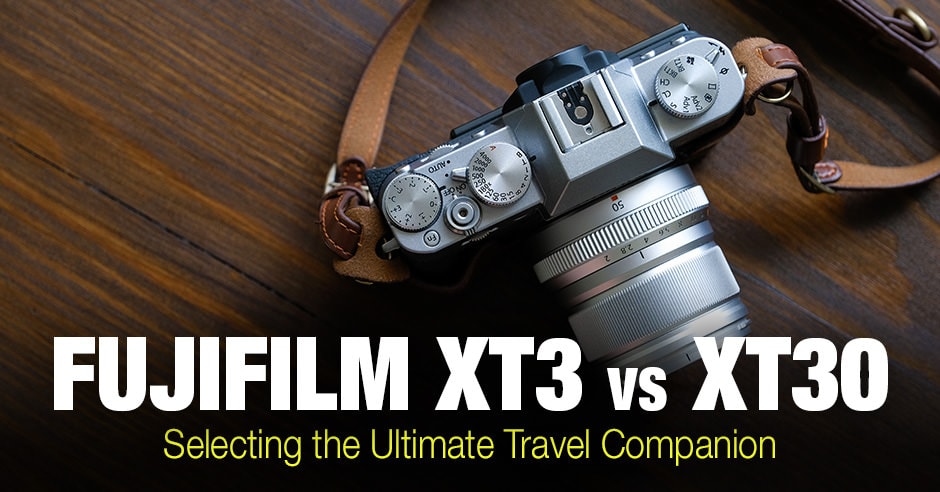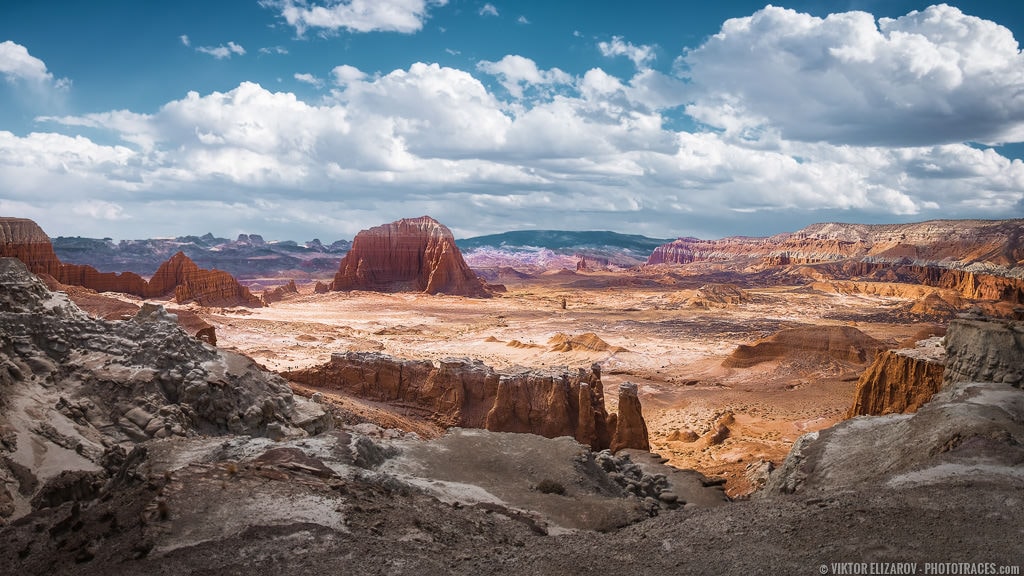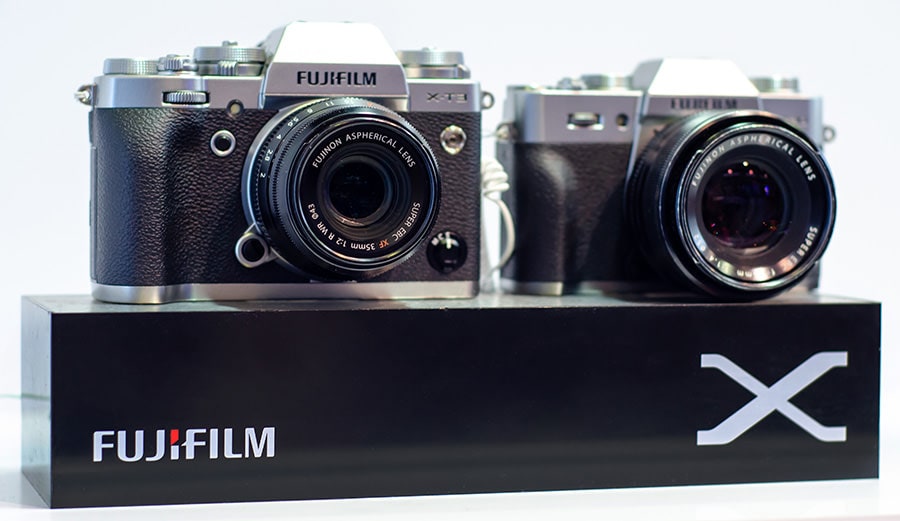Do you find the differences between Fuji XT3 vs XT30 a little confusing? Then this article will help you to make the right decision.

Every major camera manufacturers use specific, often predictable ways to label their systems. Using alphabet soup labels like “model name-S,” “R,” or “random Roman numeral,” they create diverse product lines. But it’s often a bit challenging to know precisely what you’re getting with each new model.
Each time Fujifilm creates a new sensor for their high-end APS-C cameras they’re released in the following fashion:
- first is an XT# model (XT1, XT2, XT3). The XT# camera is always the “pro” model, with specific features we’ll get to.
- second comes the XT#0 model (XT10, XT20, XT30) . The XT#0 line uses a less fully featured body that’s also easier on the wallet.
Since the XT#0 line uses the same sensor and processor, it often offers a much better value. That’s why I’m going to compare the XT3 vs XT30 so you can decide which is best for your needs!
Fuji xt3 vs xt30 Main Similarities
Same Sensor and Processor
When it comes to the XT3 vs XT30, there’s no differences here. Both cameras use Fujifilm’s latest 26.1 megapixel X-Trans IV sensor. The new sensor uses back-side illumination (BSI) technology for improved high ISO performance over older generation sensors like the XT2’s.
BSI technology adjusts the position of the wiring layer of the sensor to below the light detection zone. This way, light doesn’t get lost trying to penetrate the metal wiring zone. Both also use the latest Quad Core X Processor 4, with three times the processing speed of the earlier XT2/T20!
Lastly, these cameras can extend down to ISO 160 for peak performance in bright lighting conditions.
Same Autofocus Performance
The X-Trans IV sensor has 2.16 million individual phase detection photosites with nearly 100% coverage. But these are grouped into as many as 425 selectable focusing points. Low light performance has also been improved from -1EV in the XT2 to -3EV, allowing for swift performance even in candlelit scenes. Future firmware updates suggest focusing improvements down to -6EV; near darkness!
Legacy Fujifilm lenses like the XF 24mm f/1.4 and 35mm f/1.4 perform much better compared to the older X-mount bodies. The new focusing software reduces the infamous hunting and noisy chattering of the older lenses. While not as silent as the newer f/2 models, the f/1.4 lenses gain new life when used with either the XT3 or XT30.

Same In Camera Adjustments
As the latest Fujifilm cameras, the XT3 and XT30 include Classic Chrome, Acros, and all of the previous Film Simulations, as well as some new choices!
Eterna is the second to newest Film Simulation to be released and one that’s particularly useful for videographers. By offering a flat color profile without needing to mess around with Log footage, Fujifilm offers an in-camera cinematic style for minimal editing. There are some major differences when it comes to videography that makes choosing XT3 vs XT30 a bit more challenging. But if video is more of a side interest, both models are extremely capable.
Color Chrome is another feature both cameras share. While not a Film Simulation, per se, it can be applied to color profiles like Provia and Velvia. Color Chrome deepens and fine-tunes existing color to better display minute changes in hue. This works especially well with complex subjects like flowers and certain landscapes like autumn trees scenes or meadows!
Fuji xt30 vs xt3 Main Differences
Different Build
Neither camera feels cheap. But when it comes to the XT30 vs XT3, it’s clear that the XT3 is the premium camera. Weather sealing is a big deal and the XT3 has some of the best on the mirrorless market, with a rugged magnesium chassis and rubberized seals throughout. If you shoot in the elements, that makes choosing between the XT3 and XT30 that much easier.

The heavier body of the XT3 also means there’s room for not only dual SD card slots but the VG-XT3 battery grip. Attached, it improves handling with larger lenses like the XF 16-55mm or 50-140mm f/2.8. But more importantly, the two extra batteries improve the XT3’s stamina from approx. 390 to up to 1100 shots per charge. The XT30 has an average of 380 shots per charge and requires swapping of batteries.
Related: Comparing Fuji XT3 vs Fuji XT2
At 383 g. the XT30 is significantly lighter than the XT3 (539g.). While both are great travel cameras the XT30 wins in the portability department. It’s small enough to slip in a medium sized pocket while having 100% of the image quality of the XT3. Coupled with a compact, inexpensive prime lens like the XF 27mm f/2.8 or 18mm f/2, you have one of the best walkaround kits possible!
XT3 vs XT30 Build winner: tie, depending on your needs
Different Ergonomics
To reduce menu diving for beginner photographers, the ISO dial of the XT3 was replaced with a Mode dial in the XT30. Below the Mode dial is a switch that can be set to Advanced SR for fully automatic exposure control. This is useful if you need to capture a scene reactively and don’t have time or experience gauging precisely which aperture, ISO, and shutter speed combination is best.
Both include tilting touchscreen LCD panels with 1040K dot resolution. But the XT3 uses a tri-axis design and can flip sideways as well as up and down.
While the customizable AE-L and AF-L buttons remain on the XT30, you also lose the four custom Fn buttons surrounding the Menu button as well as the XT3’s front side button. These allow for instant access to Dynamic Range adjustments, Film Simulations, back button focusing, and other handy photography tools. The Q button still exists but is shifted right on top of the (smaller) thumb grip. A questionable choice; given how compact the XT30 already is, it’s easy to press accidentally.
XT3 vs XT30 Ergonomics winner: XT3
Different Video Quality
Looking at the XT3 vs XT30, I’m constantly impressed by how capable both cameras are. Both offer 4K at DCI (4096 x 2160p) and UHD (3840 x 2160p) resolutions. The XT3 can record at up to 60 frames per second. Recording limits are 20 minutes at 60 fps and 30 minutes at 30 fps. The XT30 records “only” 30 fps and is limited to 10 minutes per file.
See also: Fujifilm vs Canon
You also gain 10-bit 4:2:0 color when recording internally with the XT3 vs 8-bit 4:2:0 with the XT30. If you need more flexibility in post, the XT3 is better for color grading – but remember the XT30 also records Eterna! Also both models can export 4K 10:2:2 externally via HDMI.
XT3 vs XT30 Video Quality winner: XT3
Conclusion
When it comes to the XT30 vs XT3, the race is a lot closer than you might assume! For around 60% of the price of the XT3, you can have 80-90% of the performance using the X-T30.
- If you absolutely need top-notch video, weather sealing, dual card slots, and the best autofocus performance, the XT3 is the clear winner.
- But if you’re looking for top image quality in a smaller body and don’t need all of the video specs, the XT30 is the ultimate travel companion for you!

